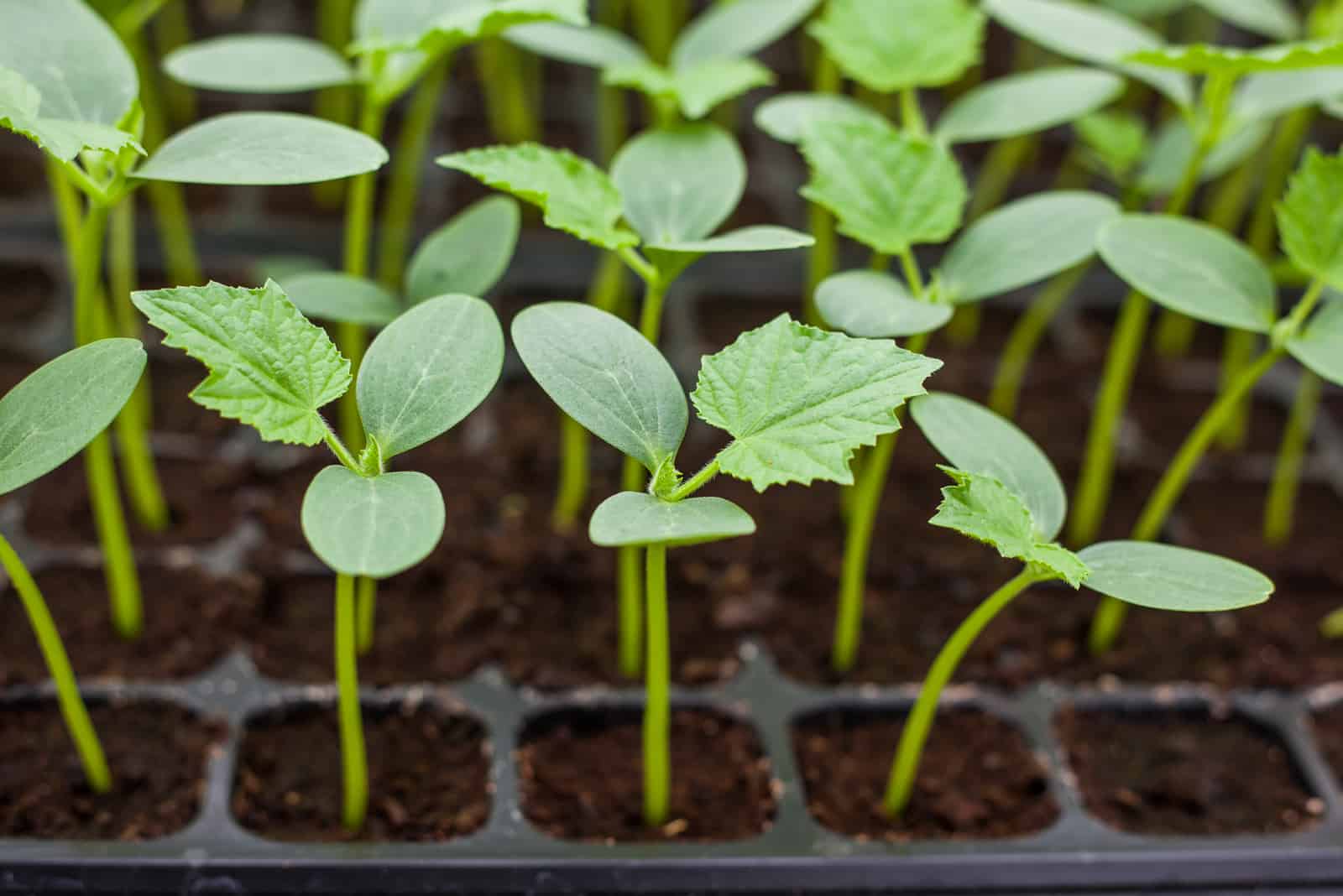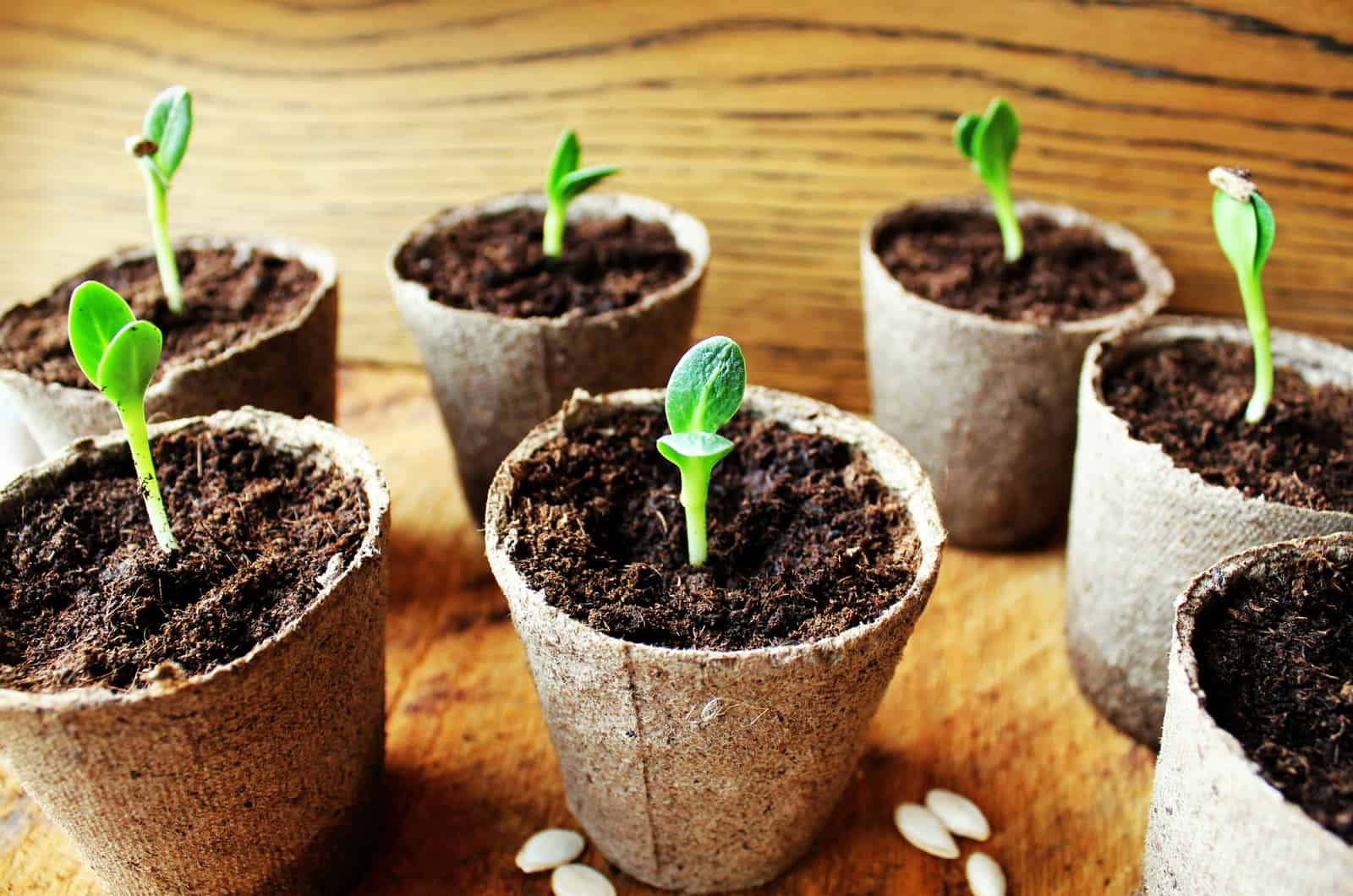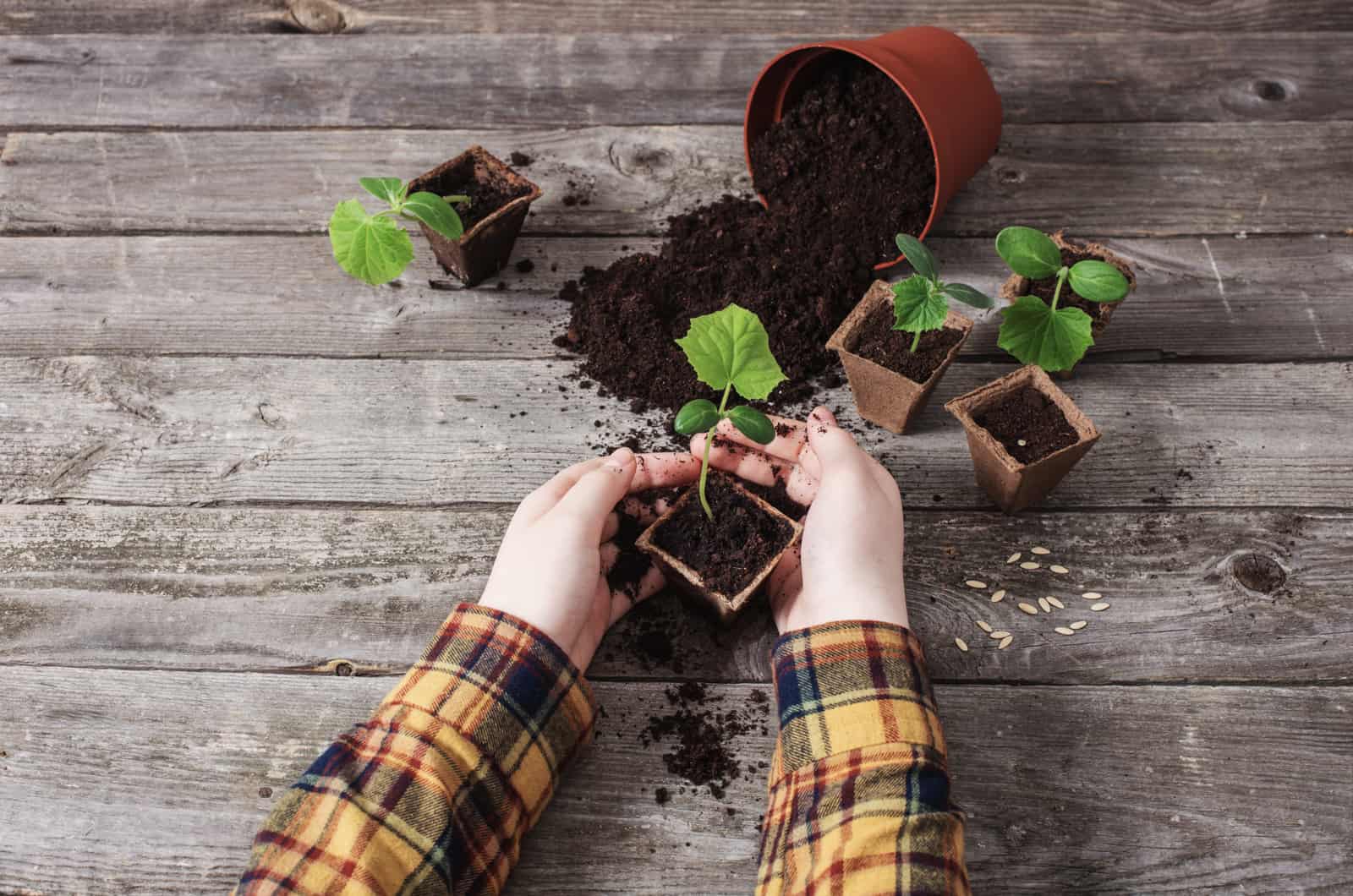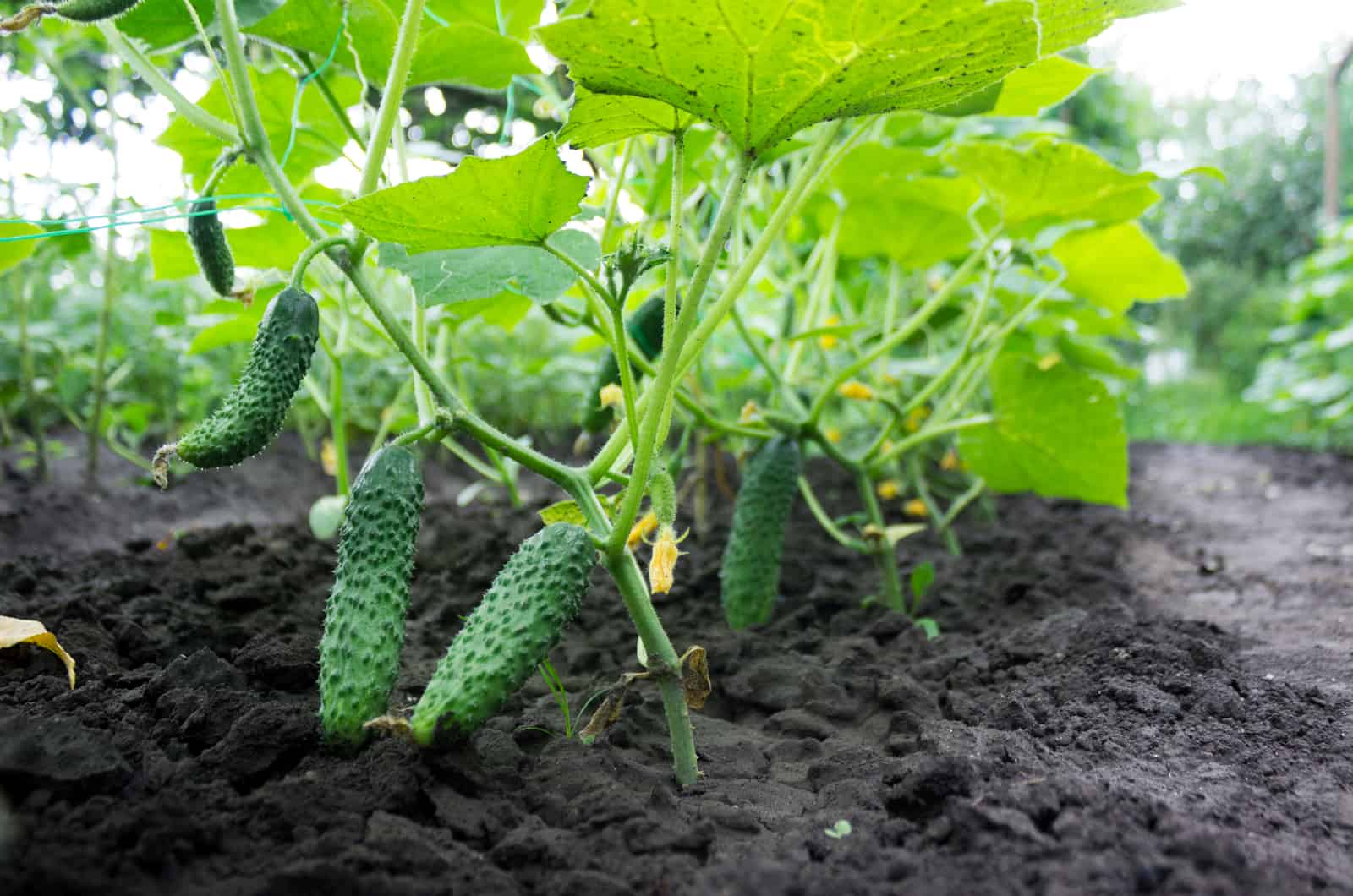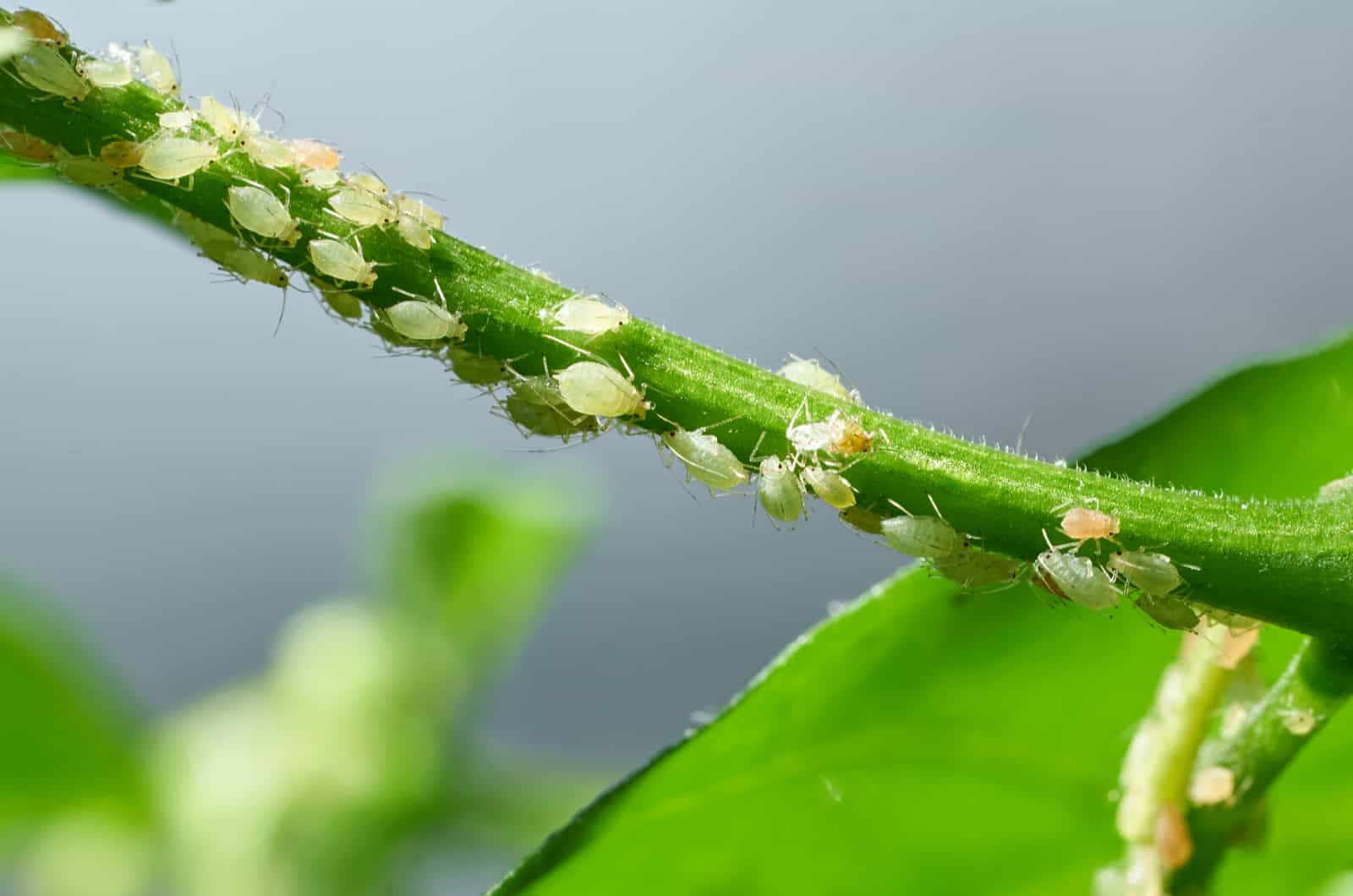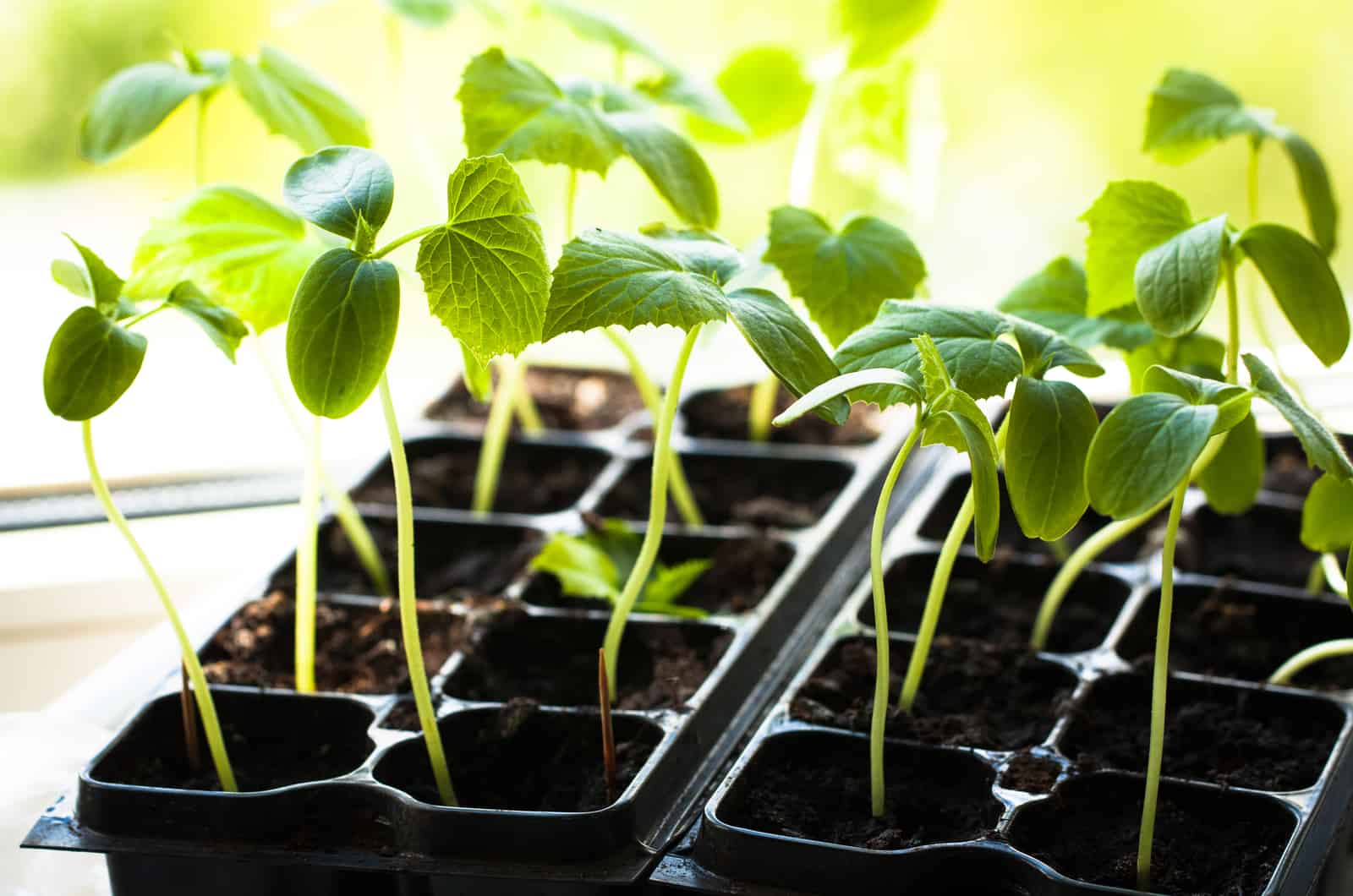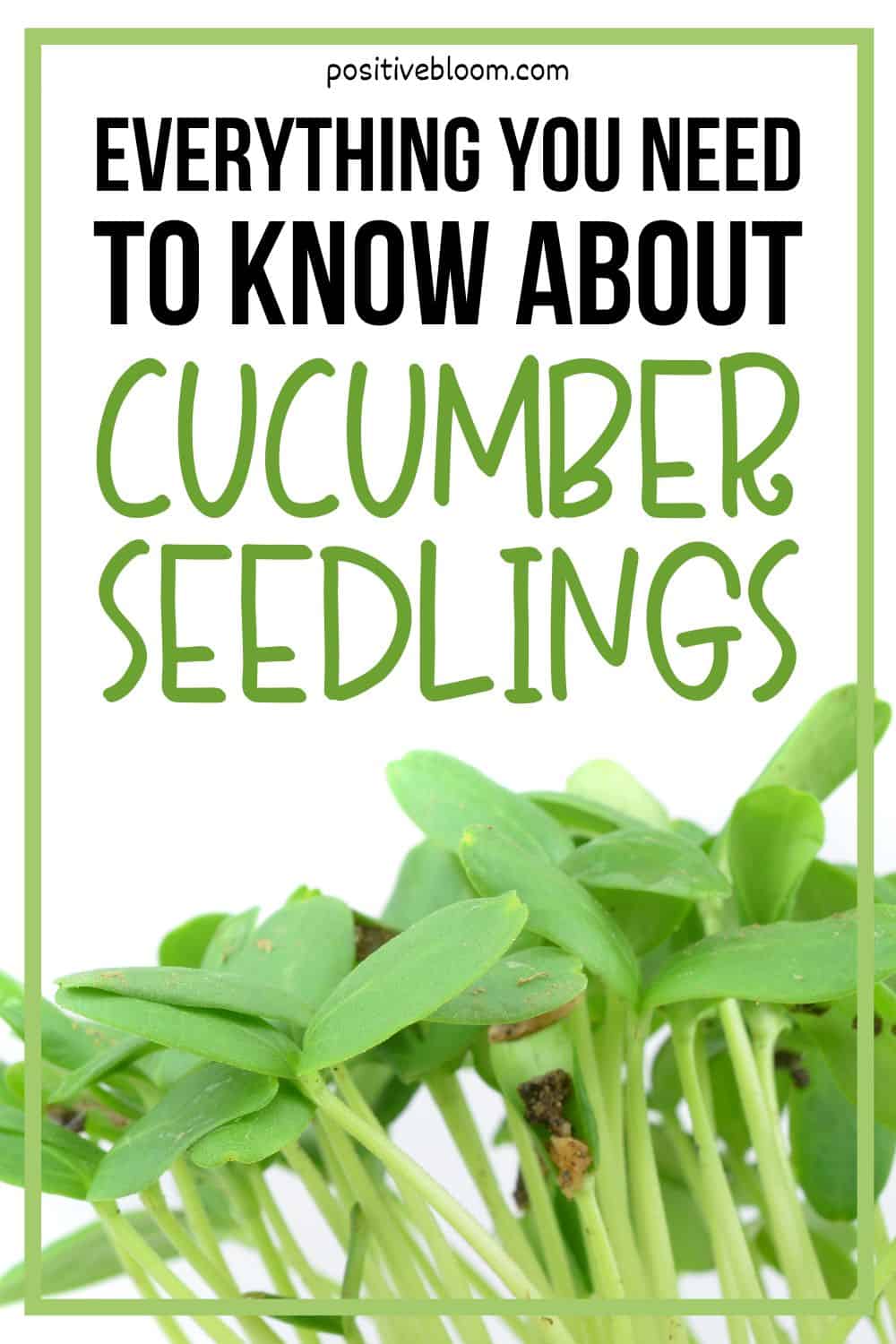Whether you are an experienced gardener or just a beginner, you must have heard that growing cucumbers can sometimes be pretty tricky. This is because Cucumber seedlings are fragile and can be easily damaged when transplanting.
You can grow cucumbers from seeds, or you can start the plant indoors and transplant the tiny seedlings outside to continue growing and developing.
Sometimes, it is necessary to start the plant indoors, especially if you live in an area with a short growing season — this way, you will extend the growing season and yield more crops.
Read on to find out everything you need to know about cucumber seedlings.
Starting Cucumber Seedlings Indoors
If you live in an area with short summers, then you should definitely start your cucumber indoors and then transplant the cucumber seedling when the time comes.
Sure, you can always buy already grown cucumber seedlings; but you can also grow them on your own! It is more fun and cost-effective that way.
Let’s dive in!
When To Start Cucumber Seedlings
The optimal time to plant cucumber seeds is a few weeks before the last frost date. The seeds will have enough time to germinate in warm soil and then get transplanted outside when the soil and air temperatures rise.
You can also start your plant earlier, although bear in mind that they grow fast and grow tall, which means you will have to take care of them for a longer time.
How To Start Cucumber Seedlings
First, you have to prepare appropriate pots to put your cucumber plants (also known as Cucumis Sativus) in: consider the size and the material. The pots should be at least 2.5 inches deep, and they must contain drainage holes at the bottom.
Even though it is not eco-friendly, I recommend that you use plastic cups — and you can always recycle them! The reason is that they provide the comfiest environment for your young plants, and the cucumber seedlings can easily be taken out of them.
You can also make your own biodegradable cups from paper or use biodegradable peat pots. Bear in mind though, that they can get moldy at the bottom because of your frequent watering, and it also takes time for them to degrade in the soil, which means that the growing period will be more extended than usual.
You will have to prepare an adequate soil before planting the cucumber seeds. Cucumber plants thrive in nutrient-rich and well-draining soil, so I suggest that you use sandy, loose soil. You can buy your potting soil in a gardening shop, or you can make your own.
The best combination is to mix equal amounts of compost, peat moss, potting soil, and perlite.
Now, let’s go through, step by step, this seed starting procedure:
1. Fill the pots with your already prepared soil.
2. Moisten the soil before planting.
3. Make two holes with your finger, about 0.5 or 1 inch deep.
4. Put 2 or 3 cucumber seeds in the holes.
5. Put the pots in a sunny location.
The Trick Of How To Start Cucumber Seedlings
Did you know that there is a different way to start the seedlings?
Well, there is: and all you have to do is buy a cucumber, put the seeds in a glass of water and mix it around. If the seeds sink to the bottom, they are viable and can be used for growing cucumbers.
Grab the seeds, place them on a wet paper towel, and grab some cinnamon and sprinkle on the top. Cinnamon prevents mold and helps seeds to sprout faster!
Then, fold the paper towel over and put it in a plastic zip lock bag. Wait for 3 days, and voila! You will see that the baby cucumber seedlings have grown!
You can plant them outdoors or put them in pots and grow them in your apartment. One cucumber plant can produce about 15 cucumbers, so there you go!
If you want to try this trick with store-bought cucumber seeds, then watch this video:
How To Take Care Of Indoor Cucumber Seedlings
Once you have successfully planted the cucumber seeds, you will have to take care of your young plant. Cucumbers love full sun, so you should put the pots in a window that gets a lot of sun exposure.
However, because you are starting the seedlings before the last frost, it can get drafty near windows; and cucumbers don’t like the cold at all!
In this case, I recommend that you invest in artificial grow lights — either way, your plant should get at least 6 hours of sunlight during each day.
The optimal soil temperature for germination is around 70 degrees Fahrenheit. Frequent watering is also necessary for germination to occur.
Once you see little sprouts coming out of the soil, you will know that you have done everything right!
Continue watering the seeds on a daily basis, though you should only pour a small amount of water on to avoid overwatering. If you notice any build-up in the soil, check if the drainage holes have been clogged.
Transplanting Cucumber Seedlings
If you have taken good care of your cucumber seedlings, then they should be ready for transplantation in no time!
You can continue growing them in your apartment, though you will have to provide a stick or a trellis — this depends on the different varieties of cucumbers. Vining cucumbers tend to climb all over the place, while bush varieties stay intact and don’t move.
Bear in mind that these seedlings are sensitive to cold temperatures, and they won’t be able to grow if the soil temperature is below 70 degrees Fahrenheit.
Read on and find out what the perfect time for transplanting is, and how to actually do it.
When To Transplant Cucumber Seedlings
Your cucumber seedlings will be ready for transplantation 3 weeks after germination — so, 3 weeks after you’ve seen those little sprouts coming out of the soil!
There are also a few other signs that you can take into account; for instance, your seedling should have at least 2 true leaves formed, 2 cotyledons, and the overall color of the plant should be dark green — this is when your seedlings are definitely ready to be transplanted.
Before transplantation, you will have to “harden” your seedlings. Don’t worry; it is not as scary as it sounds; all you have to do is put your plant outside for a few hours so that your cucumber seedling can get used to the environment.
I suggest that you leave it for a few hours during the night so that it can adapt to the usually colder night temperatures. This way, your cucumbers will be ready for their garden life!
How To Transplant Cucumber Seedlings
Remember that your cucumber seedlings are really fragile, and they often suffer from transplant shock. So, you will have to be very careful when transplanting these little babies.
Bear in mind that you should choose a garden space that gets enough sunlight throughout the day before transplanting — you will have to continue taking care of them, just like you did indoors!
Follow these steps to transplant cucumber seedlings properly:
1. Adjust transplanting to the adequate weather — this might sound silly, but trust me, your seedling would be shocked if you planted it from a cool room temperature into a regular, hot June day in your garden. This is why you should wait for a cloudy day or do it in the late afternoon, so your new seedlings are not exposed to direct sunlight.
2. Moisten the soil before transplanting — moist soil will help you to remove the seedlings easier from their pots. They will have already established dense roots, which are capable of keeping the soil from falling apart.
3. Prepare the soil — your young plants will absolutely love growing in loose, nutrient-rich soil that is well-draining. Cucumbers are known for being heavy feeders, so you might as well mix the soil with fertilizer or compost before transplanting. To yield a large harvest, you can plant them in raised beds with a soil pH from 6.5 to 7.
4. Plant them at the soil level — you can go even deeper if your seedlings are long and leggy.
5. Water thoroughly — moist soil will help your seedlings to recover and avoid transplant shock.
6. Put the seedlings about 6 inches apart from each other — this way, you will get a compact plant that produces numerous cucumbers! This step should be avoided if you are growing bush varieties.
7. Prepare the trellis before transplanting — your cucumber seedlings are fast growers, and they will climb all over the trellis in no time! If you decide to install the trellis after transplanting, it will only damage the roots and break the delightful seedlings!
Growing Cucumber Seedlings In Vegetable Gardens
If you are lucky and live in an area with relatively high temperatures, then you can plant cucumber seeds directly into the soil.
The principle is pretty much the same, though we will go through it step by step to make sure that you plant the seeds ideally!
If you are practicing companion planting, then you should plant them near Nasturtium as they are great companions to your cucumbers!
How To Plant Cucumber Seeds
1. We start off by choosing the right place for your soon-to-be cucumbers. It is essential that the area gets at least 6 hours of full sun throughout the day, and that the soil is rich in organic matter. Before sowing, you can add fertilizers to boost up the nutrients.
2. The seed packets should be planted by direct sowing — sow the seeds 1 inch deep and at least 3 feet apart in rows, or 1 foot apart in the case of vining cucumbers.
3. They can also be planted in raised beds that keep the young plants high and away from pests and insects.
4. For growers who live in colder areas, I recommend that you use black plastic sheets as row covers in order to keep the soil temperature warm and prevent pests from destroying your plant.
5. Once the seedlings have grown, add mulch around the base of the plant to retain moisture and prevent weed growth.
6. Install a trellis if you are growing a climbing type of cucumber.
How To Grow Cucumbers
Similar to starting cucumber seedlings indoors, germination will occur in the first 2 weeks after sowing the seeds, and you will notice little sprouts in no time! It is necessary to water constantly because the seeds need moisture in order to germinate.
Once you see that the sprouts have started growing, your young plant will need at least 1 inch of water per week, sometimes even more if the temperatures are high.
When watering, make sure not to soak the leaves because it will only make them more susceptible to pests and diseases. I recommend that you water them in the morning so that your plant has enough moisture throughout the day.
When cucumber seedlings emerge, mulch the base of the plant to retain moisture and prevent weeds from growing; once they grow 4 inches tall, thin the seedlings so that they are at least 1.5 feet apart.
If you have already added fertilizers before planting, then the fertile soil will only need a side-dressing compost. On the other hand, if you did not provide your plant with any fertilizers, I suggest that you use liquid fertilizer and apply it every week, once the female flowers have emerged.
After blooming, apply fertilizers once every 3 weeks.
Soon, you will be able to see little cukes growing on the plant. When to harvest cucumbers depends on the type of cucumbers you have planted: you can harvest slicing varieties once they have grown at least 6 inches long, while pickling cucumbers are drastically smaller and need to be harvested when they have grown to about 3 inches.
Common Issues With Cucumber Seedlings
When you are growing cucumbers, you have to properly take care of them but also pay attention to pests and diseases. Know that these vegetables are not disease-resistant — their growth can be easily stunted and then you will end up with no pickles this year!
The most useful thing that I have learned throughout my gardening journey is companion planting. Some plants attract beneficial insects and deter annoying pests and bad insects, while others attract pollinators.
You should plant your cucumbers with dill, corn, borage, oregano, beans, beets, radishes, and nasturtium. Avoid planting cucumbers with potatoes, garlic, sage, and rue.
Now, let’s take a look at the pests and diseases that your cucumber plant is susceptible to.
Cucumber Beetles
These are a type of bad insects that absolutely love munching on the leaves of a cucumber plant. Some of the signs that indicate a cucumber beetles’ invasion are holes in the leaves and flowers, and the overall wilting of the plant.
Cucumber beetles tend to spread bacteria that cause specific bacterial wilt, which eventually leads to the death of the plant.
You can handpick these annoyances, add large amounts of mulch, or remove the entire plant to prevent spreading the infection.
Aphids
Aphids are sap-sucking insects that usually invade cucumber plants, and leave a sticky extract all over the plant. Another sign of an aphids infestation is malformed leaves that start to turn yellow, and distorted fruits and flowers.
To prevent aphids, you can practice companion planting, or you can mix water with insecticidal soap and spray it all over the plant. You can also apply neem oil on the leaves.
Companion planting is the key here: it will deter aphids, but also attract the kind of insects that eat aphids for breakfast.
Powdery Mildew
If you notice any white spots and patches on the leaves’ surfaces, or overall wilting of the plant and yellowing leaves, then your plant is probably suffering from powdery mildew. This is a fungal disease that usually affects foliage, stems, fruits, and flowers.
You should remove the damaged leaves and flowers and provide your plant with enough sunlight throughout the day and adequate air circulation. You can also use fungicide or spray the plant with a mixture of baking soda and water.
Avoid companion planting with yarrow, as they are both prone to powdery mildew infections.
Anthracnose
Here is yet another fungal infection that can stop the cucumber seedlings from growing and developing. This infection is manifested through purple and black spots on the leaves, as well as the stems and fruits.
It can also lead to rotten roots, which are then not able to absorb the nutrients and water from the soil. This leads to the death of your seedling.
This can be prevented by regular watering — not so much that it leads to overwatering though, and by mulching.
Infected plants should be removed, or treated with fungicide if the disease has not fully spread to the entire plant.
Blossom-end Rot
Your cucumber seedlings will start producing flowers at some point, from which fruits will develop. So, if you notice any dark spots at the end of your fruits, this is usually an indicator of blossom-end rot.
This is a disorder that is caused by a lack of nutrients in the soil, especially calcium.
To prevent this from happening, I suggest that you fertilize your seedlings and provide good drainage of the soil. Remove the affected fruits, and don’t use nitrogen-consisting fertilizers in large amounts.
Squash Bug
If you notice any brown spots on the cucumber seedlings’ leaves, this usually means that squash bugs have visited your plant.
Not just visited, but also laid eggs on the underside of the leaves — if you notice yellow egg clusters, remove them immediately.
Squash bugs can affect the fruit production, leaving you with malformed and bitter-tasting cucumbers.
To avoid this, you should rotate the crops and put row covers down.
Mosaic Virus Cucumber
The mosaic virus is a common issue of every vegetable in home gardens. If you notice any discoloration on the leaves (usually yellow/brown patches), then it is a sign that your plant has been infected with the virus.
Unfortunately, there is no cure for this virus — you can add mulch and use row covers. However, the crops of infected plants are still edible because the virus is only harmful to plants and not humans.
Frequently Asked Questions
1. How long do cucumber seedlings take to grow?
It will take about 10 days for the seeds to germinate, then you will notice little sprouts and leaves coming out of the soil. They will continue to grow and develop, and it will take about 3 weeks for the cucumber seedlings to establish.
The entire cucumber plant will take from 50 to 70 days to reach full maturity and produce cucumbers.
2. What are the benefits of transplanting cucumber seedlings?
Cucumbers are really fragile and sensitive to low temperatures, so they will not grow if they are planted outside in the cold soil. If you start your cucumber seedlings indoors and then transplant them, you won’t have to worry about the cold weather affecting your young plants because you can provide them with the best conditions indoors!
You can start cucumbers indoors about 3 weeks before the last frost date, and then transplant the seedlings once the soil has warmed up. This way, you will yield better crops and extend the growing season.
3. How big should cucumber seedlings be before transplanting?
The cucumber seedlings should grow to at least 3 inches before transplanting. If the seedlings have developed 2 true leaves, 2 cotyledons, and the overall color of the plant is dark green — these are the signs that your cucumber seedlings are ready to be transplanted.
To Sum Up
Growing cucumbers can be tricky, but it is totally worth it. Cucumbers are super beneficial to our health, and skin as well — drinking cucumber water has definitely improved my skin, and now I have that natural glow!
The good thing is that you can start cucumber seedlings indoors to extend the growing season, and have many more cucumbers later.
Be careful with transplantation, take good care of your cucumber seedlings and protect them against pests and diseases that usually invade cucurbits.
Don’t forget to install a trellis for the vining varieties, and fertilize them regularly because they absolutely love plant food.
Until next time!
Like this post? Share or pin it for later!

